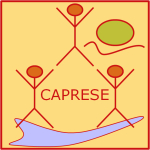Sustainable Development
CAPRESE Consultants provide methodology development, programme design, training, coaching and consulting in the 3 main areas of Sustainable Development, Economic, Environmental and Social.
Economic
One of the most convincing arguments in favour of sustainable development for the majority of private entrepreneurs is the ability to ensure long term economic growth. In order to facilitate acceptance of our methodologies and services, the economic aspect is always a necessary consideration.
Environmental
The environmental aspect of Sustainable Development is undoubtedly the most well-known. Our aim is to help our clients achieve the highest impact with lowest cost of implementation.
Social
Environmental and Economic growth can only happen as long as there are people to implement those measures. Whether these changes are to occur in a geographic region, vertical industry or single corporation, the stakeholders, employees and inhabitants all need to be aligned behind the same goal. Specifically, employees in industry need to feel that the change is beneficial to them and that they have the appropriate skills to implement the change.
Resource Efficiency - Sustainability Saves Money
Many people in organisations, including senior management, fear that becoming more sustainable is an unnecessary cost. They grudgingly accept reporting in this area to comply with legislation in this area and some will undertake ad hoc initiatives as part of their Communications and Public Relations activities. However, through Resource Efficiency and Recycling, companies can reduce their operations and production costs, thereby increasing their profit margin, without needing to invest measures to increase revenue. The LEAN manufacturing approach introduced by Japanese industry, principally Toyota, in the latter half of the 20th century has now been taken up by manufacturers around the globe. However, the approach was never considered to be applicable to small and medium sized enterprises. Typically, micro-enterprises in developing countries are completely unaware of such approaches.
To address this issue, The German International Development agency (GIZ, formely GTZ) developed a methodology and suite of techniques to introduce the concepts of resource efficiency to SMEs, through a cascaded capacity-building approach, simultaneously educating local services providers to continue this work on an ongoing basis. This suite of tools is now called Profitable Resource Efficient MAnagement (PREMA) and the organisation that manages and promotes the approach is PREMAnet e.v.
The United Nations Environment Programme (UNEP) is partnering with the European Commission to develop a similar approach to PREMA called Eco-Innovation and the United Nations Industrial Development Organisation has sponsored a less intense approach, EcoProfit, which was developed by Austrian consulting firm Stenum. Ecoprofit has the advantage of requiring fewer interventions, but does not deliver the added benefit of the sustainable business model that PREMA's cascaded capacity-building approach promotes.
What's the latest in the world of Resource Efficiency?
Use the hashtag #ResourceEfficiency_Indonesia on Twitter to get the latest updates on Resource Efficiency and Cleaner Production in Indonesia.
